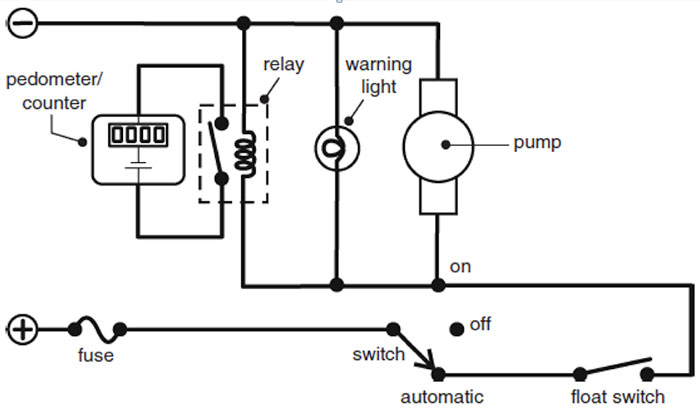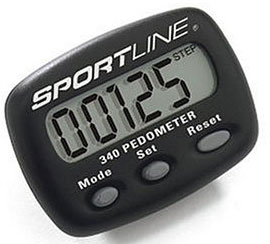Advertisement
Knowing if your bilge pump is running often, or perhaps continuously, can give warning of a potentially serious problem.

Wiring a warning light/horn and bilge counter to a float-switch-activated bilge pump is straightforward.
The sound of an automatic bilge pump is usually drowned out by the other sounds of a boat underway, but knowing when it runs can be essential to the safety of the boat. It lets you catch a sudden leak long before it's under a foot or more of oily water. Noting a decreasing time between cycles is also an effective reminder of the need for servicing a stuffing box.
Add A Bilge-Pump Warning Light
It's easy enough to add a warning light that visually announces when your bilge pump is running. Any 12-volt panel light will work as long as it's bright enough to be seen in sunlight. Red is preferred.
Locate the warning light where it will get the helmsman's attention. On a powerboat, that usually means somewhere on the instrument panel. The face of the bridge deck is often the most visible location on a sailboat. Panel lights cost only a few dollars, so a second one located in the captain's cabin is reassuring.
Wiring is straightforward as long as the pump has a separate float switch. Use a step-down crimp butt connector to connect one side of the light into the circuit between the switch and the pump. Connect the other side of the light to ground. When the float switch closes, it will energize both the pump and the light(s).
Let's Count Pump Cycles, Too
A warning light is only useful when there is someone aboard to see it illuminate. If your boat remains in the water when not in use and you always find the bilge dry when you return to it, is that because the boat is watertight or because the automatic pump has been doing its job?
When buckets gave way to hand pumps, sailors counted strokes to monitor the integrity of the hull and deck. Automatic bilge pumps have long since eroded this vigilance. Leaks are rarely catastrophic without warning. They more often start small, growing more serious over time. If your automatic pump is keeping your bilge dry, you may not realize you have a problem until it's big. The solution to this is an electronic counter that keeps track of the number of pump cycles.
Wire a cycle counter exactly like a warning light. Splice the positive lead into the wire between the float switch and the pump, and connect the negative lead to ground. When the pump is energized by the float switch, the counter advances. An automatic bilge pump with an integral sensing switch should have a third wire for manual override. This wire connects internally to the pump motor and will be energized when the pump runs, so on this type of pump, connect the counter's positive lead to this wire. (This can also be the power source for a warning light with this type of pump.) Note that if your pump is the type that cycles on a regular basis checking for water via the load on the impeller, neither a counter nor a warning light will be useful.

The price of cycle counters marketed for bilge-pump monitoring tends to discourage casual purchase. If you're into precision electrical work and want to spend the time, consider creating your own from a pedometer (Sportline 340, $10) and a 12V reed relay (Radio Shack, $5). The pedometer normally advances the counter as a spring-loaded pendulum makes momentary electrical contact at each step. Open the case, remove the pendulum, and delicately solder the switch wires from the reed relay to the two contact surfaces. Solder leads long enough to reach your bilge-pump wiring to the other two wires on the relay. One connects to the positive side of the pump, the other to ground (polarity does not matter here). A 12-volt current — the energizing of the pump motor – closes the reed switch and advances the counter one click.
